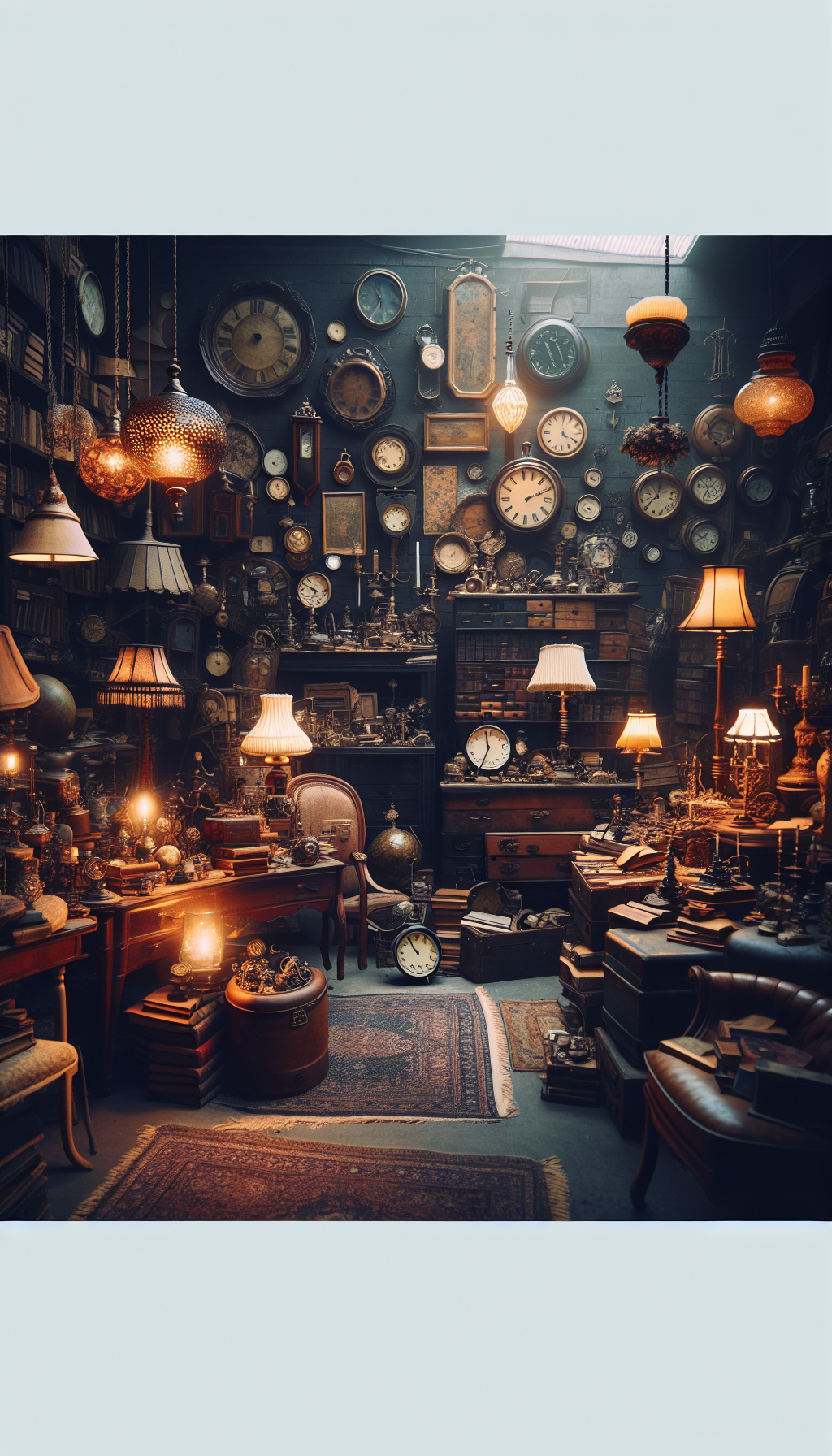Expert Guide Where To Get Your Antiques Appraised For Authentic Valuation
Authentic valuation is more than a price guess—it’s a documented opinion of value tied to a stated purpose, timeline, and methodology. Whether you’re insuring a jewelry heirloom, donating a painting, settling an estate, or deciding whether to sell a mid-century chair, the right appraiser and report format matter. This expert guide explains where to get your antiques appraised, how to choose the right specialist, what it will cost, how to prepare, and what a compliant appraisal report includes.
Where to get your antiques appraised
Independent credentialed appraisers
- Seek specialists aligned with your category (e.g., fine art, furniture, jewelry, silver, Asian art, books & manuscripts, rugs, militaria).
- Look for membership and designations from respected professional bodies (e.g., ISA, ASA, AAA) and current USPAP compliance.
- Independent appraisers typically offer the most flexible formats (insurance, fair market value, donation, estate, equitable distribution, damage/loss).
Auction houses
- Department specialists can identify, attribute, and provide pre-sale estimates. Many hold valuation days or accept online submissions for free or modest fees.
- Pre-sale estimates are for auction consignment decisions and are not automatically USPAP-compliant appraisals. Ask if they provide formal, written, signed appraisal reports and what standards they follow.
- Useful when you’re leaning toward sale; fees may be reduced or waived if you consign.
Specialty dealers and galleries
- Ideal for niche categories (e.g., Art Deco lighting, Inuit art, scientific instruments). They bring deep market knowledge and comparables.
- Be aware of potential conflicts of interest if a dealer both values and seeks to buy your item. For standalone valuations, insist on flat or hourly fees, never a percentage of value.
Museums, historical societies, and academic resources
- Many museums host object-identification days or can suggest category experts. Curators often help with authentication pathways (attribution, period, materials).
- Most museums do not provide monetary values; they can, however, guide you to qualified appraisers or necessary scientific testing.
Online appraisal services
- Good for triage: quick, photo-based opinions of value and identification for a modest per-item fee.
- Limitations: often not suitable for insurance scheduling, IRS donation/estate filings, or complex authenticity issues. Use them to decide if a formal appraisal is warranted.
Jewelers, watchmakers, and gem labs
- For diamonds, colored stones, and watches, seek practitioners with gemological credentials (e.g., Graduate Gemologist) or brand-authorized service centers.
- Understand the distinction between grading (quality assessment) and valuation (monetary opinion anchored to a value definition and date).
Referrals from professionals
- Trust companies, estate attorneys, wealth managers, and insurance brokers often have vetted appraiser networks for your region and asset class.
Scientific and conservation labs (supporting authenticity)
- Materials analysis (e.g., thermoluminescence for ceramics, radiocarbon dating for organics, pigment analysis for paintings, dendrochronology for panel paintings/furniture) can bolster authenticity. These tests complement, but do not replace, a professional valuation.
How to choose the right appraiser for authentic valuation
Verify specialization
- Match the appraiser’s core practice to your object type and period. A Victorian furniture specialist is not automatically right for contemporary prints, and vice versa.
Confirm qualifications and standards
- Ask for current USPAP compliance and professional memberships/designations.
- Request a CV and a redacted sample report in the value type you need (e.g., insurance replacement value vs fair market value for estate).
Clarify intended use and value definition
- A credible appraiser asks first: What’s the purpose? Common value definitions:
- Insurance replacement value: new-for-old or like-kind retail replacement.
- Fair market value: price between willing buyer and seller with no compulsion, typical for estate and donation.
- Marketable cash value: quick-sale disposition contexts.
- Equitable distribution: divorce or estate division.
- The value definition and effective date drive research and comparables.
- A credible appraiser asks first: What’s the purpose? Common value definitions:
Ensure fee transparency and ethics
- Prefer hourly or flat fees; avoid fees based on a percentage of value (a conflict with USPAP ethics).
- Appraisers should not solicit to buy what they appraise for you. If you want sale options, separate the roles or get multiple quotes.
Check insurance and references
- Professional liability (E&O) insurance is a plus. Ask for references from attorneys, insurers, or conservators who’ve used the appraiser’s reports for formal purposes.
Red flags
- Guaranteed outcomes, contingent fees, refusal to state standards, one-page “certificates of value,” or reluctance to put conclusions in writing.
Costs, timelines, and appraisal formats
Typical fee structures
- Hourly rates: generally $150–$400+ depending on specialty, complexity, and geography.
- Day rates for on-site cataloging: often $800–$2,500+.
- Per-item quick opinions (not USPAP): $20–$150 via online services or show days.
- Travel, photography, and lab testing may be billed separately.
Timelines
- Single-item, straightforward insurance appraisals: 1–2 weeks after inspection.
- Multi-object estates: 2–6+ weeks depending on scope and data gathering.
- Rush service may be available at a premium. Jewelry and watches can sometimes be turned around same-day if documentation is in order.
Appraisal formats and intended use
- Verbal consultation: advisory only; no formal report; helpful for triage or sale strategy.
- Written restricted-use report: concise, for a single client and purpose; may be suitable for internal planning.
- Full USPAP-compliant report: required for insurance scheduling, IRS donation/estate matters, litigation, or when third parties will rely on the valuation.
- Auction house estimate: for consignment decisions; not automatically suitable for insurance or tax filings unless specifically formatted and signed as an appraisal.
IRS-related notes (donations and estates)
- A “qualified appraisal” by a “qualified appraiser” is generally required for noncash charitable contributions over $5,000.
- For certain art items valued at $20,000 or more, expect stricter documentation requirements, including detailed photographs.
- For very high-value art, you may request an IRS Statement of Value. Always coordinate with your tax professional for current thresholds and filing specifics.
Insurance expectations
- Insurers often want a USPAP-compliant report with replacement value, detailed descriptions, measurements, photographs, and signatures. Some maintain preferred appraiser networks—ask your broker.
Preparing your item: documentation and authenticity support
Strong documentation accelerates research, improves accuracy, and can materially impact value.
Gather provenance and paperwork
- Purchase receipts, invoices, previous appraisals, certificates of authenticity, correspondence, exhibition catalogs, auction listings, import/export permits, conservation reports.
- Ownership chain and where/when acquired. Even informal notes help.
Record identifying marks and measurements
- Signatures, hallmarks, assay marks, maker’s labels, serial and reference numbers, edition numbers, foundry stamps, gallery labels, verso inscriptions, patent dates.
- Exact dimensions and weight. For jewelry, stone measurements, metal karat, and any grading reports.
Provide quality images if remote
- Front, back, sides, close-ups of marks, details of condition (chips, tears, restorations), and scale references (ruler/coin).
- Natural, diffuse light; avoid heavy filters. Include the back or underside where labels are often found.
Don’t over-clean
- Leave patina and surface intact. Over-polishing silver or aggressive cleaning of paintings/furniture can erase value-critical evidence.
Category-specific tips
- Furniture: wood species, joinery, secondary woods, drawer bottoms, tool marks, upholstery history.
- Silver: complete hallmark sets (maker’s mark, assay, standard mark, date letter), weight, pattern name.
- Rugs/textiles: knot count, materials, region, edge/selvage details, dye migration, condition.
- Paintings/prints: signature placement, medium, edition details for prints, provenance labels on verso.
- Books/manuscripts: edition state, dust jacket, inscriptions, condition of binding and pages.
- Watches/clocks: brand, model/reference, serial number, service history, original box/papers.
- Coins/stamps/cards: consider third-party grading for condition; appraisers will incorporate grade into value analysis.
When scientific testing helps
- Analysis can confirm age (thermoluminescence for earthenware), wood dating (dendrochronology), pigment composition (paintings), or gemstone identity. Coordinate with your appraiser to determine if tests are necessary and proportionate to value.
What a compliant appraisal report includes
A credible, USPAP-compliant report is more than a number. Expect these core elements:
Client, intended use, and intended users
- Who the appraisal is for, why it’s being prepared (insurance, estate, donation, litigation, equitable distribution), and who may rely on it.
Type and definition of value and effective date
- Clear value definition (e.g., fair market value, replacement value) and the valuation date; both materially affect conclusions.
Object identification and description
- Maker/attribution, title/subject, date or period, materials, dimensions, markings, condition, and any restoration, with high-quality photographs.
Scope of work and research methods
- How the appraiser examined the object (in-person/remote), research undertaken, markets considered, and sources consulted.
Market analysis and comparable sales
- Relevant comparables with dates, venues, lot numbers, and hammer/realized prices or retail asks, adjusted for differences (condition, size, period, provenance, market tier).
Assumptions and limiting conditions
- Disclosures on authenticity opinions, unseen elements, reliance on provided documents, and any tests or lack thereof.
Certification and signature
- Appraiser’s signed certification, credentials, USPAP compliance statement, and curriculum vitae or qualifications.
Value conclusion
- Stated value per item (or grouped where appropriate), sometimes with ranges if suitable for the assignment and intended use.
If your report lacks these components, ask for a revision or seek another appraiser—especially if third parties (insurers, courts, tax authorities) will rely on it.
Practical checklist and next steps
Use this concise plan to move from “I need an appraisal” to a signed, reliable report:
- Define your purpose and value type (insurance, sale, estate, donation, equitable distribution).
- Shortlist 2–3 appraisers who specialize in your category and confirm USPAP compliance.
- Request a scope of work, fee structure (hourly/flat), estimated timeline, and a redacted sample report.
- Gather provenance, documents, and high-quality photos; avoid cleaning before inspection.
- Schedule inspection (in-person preferred for complex or high-value items).
- If authenticity is uncertain, discuss whether scientific testing or specialist opinions are warranted and proportionate.
- Review the draft for accuracy (names, dates, dimensions, marks) and clarity of value definition and effective date.
- Receive the signed report; store a digital copy with your insurance or estate files.
- Calendar a review every 3–5 years, or sooner if markets move, condition changes, or you change intended use.
FAQ
Q: What’s the difference between an appraisal and an auction estimate? A: An auction estimate advises likely sale range at that auction and is geared toward consignment decisions. A formal appraisal is a signed, standards-based report tailored to a specific purpose (insurance, estate, donation) and includes methodology, comparables, and defined value terms.
Q: How much does a professional appraisal cost? A: Expect $150–$400+ per hour, or day rates for on-site work. Simple single-item appraisals might total a few hundred dollars; complex, high-value, or research-heavy assignments can run higher. Avoid percentage-of-value fees.
Q: Can my appraiser buy the item after appraising it? A: It’s a conflict of interest to appraise and then purchase under the same engagement. If you decide to sell, separate the valuation from any sale negotiations or seek multiple independent offers.
Q: Will an online appraisal work for insurance or tax purposes? A: Photo-based opinions can be helpful for triage but are often not sufficient for insurance scheduling or IRS filings. For those uses, ask for a full USPAP-compliant written appraisal.
Q: Should I clean or restore before the appraisal? A: No. Over-cleaning can erase value-critical evidence. Let the appraiser see the item as-is; they can advise if conservation will help or hurt value.
With the right specialist, clear scope, and solid documentation, you’ll get an authentic valuation you can rely on—whether you’re insuring, donating, dividing an estate, or deciding when and how to sell.




